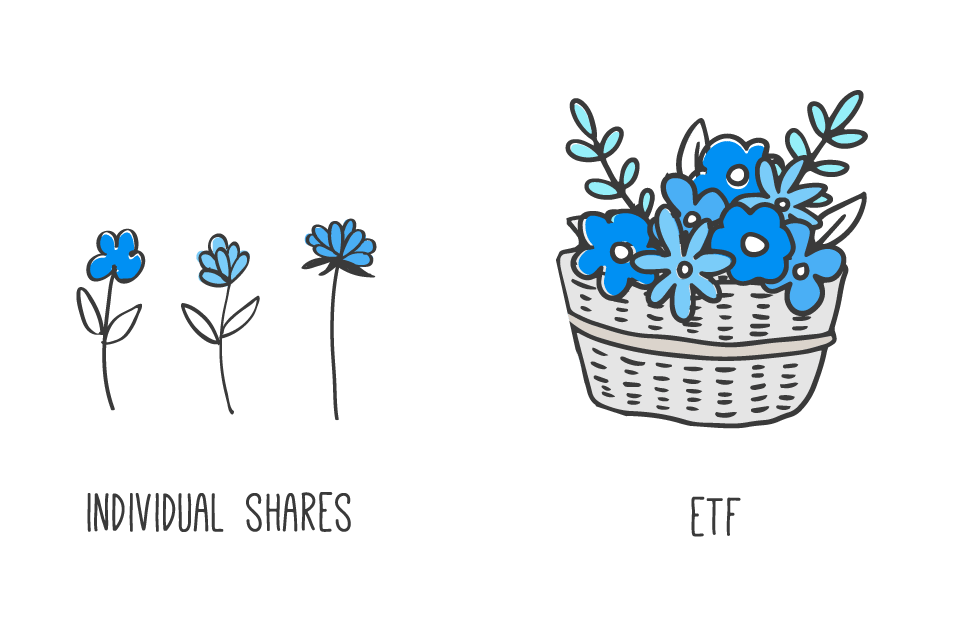The S&P/ASX 200 is an Australian stock market index, created and maintained by Standard & Poor’s (S&P). It tracks the value of the 200 largest public companies ranked by their market capitalisation, adjusted for the shares that are actually available on the market.
How is the ASX 200 calculated?
This is a called a ‘market capitalisation-weighted free float-adjusted’ index.
Wow, what a mouthful!
Basically, companies are ranked using their market capitalisation and the biggest 200 are included in the index.
Market capitalisation equals share price multiplied by the number of shares on issue (share price x number of shares).
For example, if Orange Phones has 200 shares currently priced at $5, its market capitalisation is $1,000 (200 x $5).
The companies with the largest market capitalisation make up the largest part of the index.
The index excludes companies which have a big chunk of their shares not listed on the market. After all, if no-one else is likely to invest in them, they shouldn’t be included.
Which companies are included in the ASX 200?
As you know, the ASX 200 index is made up of the largest 200 companies (according to market capitalisation) listed on the ASX.
As of early 2020, the top 5 companies in the index are Commonwealth Bank, CSL, BHP, Westpac and NAB.
One characteristic of the ASX 200 index is that it is heavily skewed towards financials and, to a lesser extent, materials — these sectors represent ~30% and ~18% of the index, respectively, as of January 2020.
For an updated list of the ASX 200 index, you can visit the Market Index website and sort the index according to “mkt cap” — i.e. market capitalisation.
Why does the ASX 200 go up and down?
The S&P/ASX 200 will increase if enough companies in the index see their share prices rise, and fall when the shares of these companies are sold down.
S&P updates and changes companies in the index each quarter (if needed) to ensure that only the largest 200 companies on the market are indeed included in the index.
Why is the ASX 200 index expressed in “points”?
The reason most indices, including the ASX 200, use points comes back to the way they are calculated.
We’ve covered this topic in detail in our blog post: Why is the All Ordinaries and ASX 200 in points and not dollars?
Who uses the ASX 200?
Some of the largest passive managed funds and exchange-traded funds (ETFs) are designed to track the ASX 200, while many professional investors use it as a benchmark for their investing performance.
What is a managed fund and how does it work?
Visit our blog post: How Does A Managed Fund Work? and watch the video below to find out.
How to invest in the ASX
Investors are able to get exposure to the ASX 200, as well as other popular stock market indices, through something known as ETFs.
ETF (not EFT!) stands for Exchange Traded Fund.
ETFs are:
- A bunch of investments (e.g. shares) put in one basket
- You buy the ‘basket’ just as you would any other share on the stock exchange
- The company that operates the ETF collects a small yearly fee, taken out of your investment automatically

Just imagine you walk into a florist. Instead of buying one stem or flower (a share), the florist puts together a posy or ‘basket’ of flowers (an ETF). You can buy the entire basket.
These ‘baskets’ can be designed to track the performance of particular stock market indices. For example, there are ETFs that track the ASX 200 index, the S&P 500 index, the NASDAQ composite, and so on.
When we say that an ETF “tracks” a particular index, this means that the professional funds management company (otherwise known as the ETF issuer) will buy similar investments (e.g. shares of companies) to the index in an attempt to closely match the index’s return.
Imagine the florist is the ETF manager who is trying to create a basket of flowers according to what is the most popular and valuable.
How do I invest in ETFs?
For starters, why not take our free Beginner’s ETF Investing Course!
In our Beginner ETF Investing Course, we’ll answer the 10 most common questions Australians have about ETFs, including what they are, why you might use them, what you need to tell your accountant, and more.
Then, we’ll take you through 5 steps for getting started and what you can expect.
All this for a grand total of $0… sounds like a pretty great deal if you ask us!
So, what’re you waiting for? Click here to enrol now.
[ls_content_block id=”27643″]



